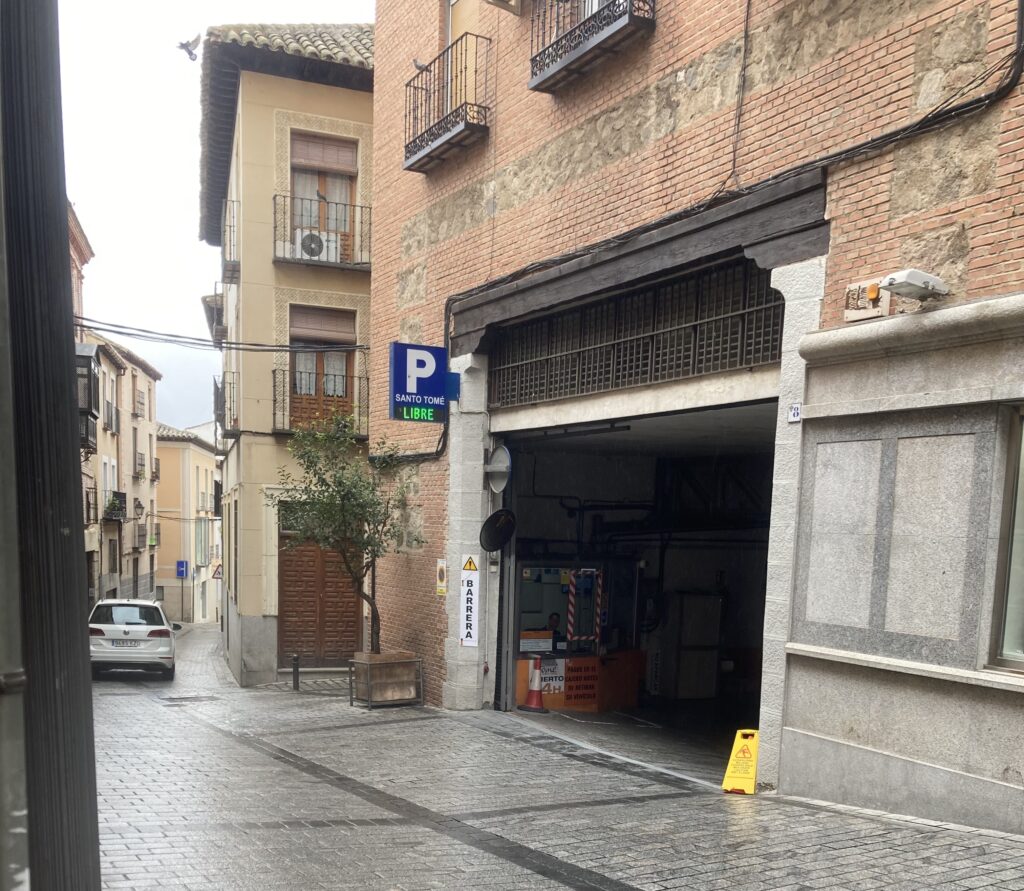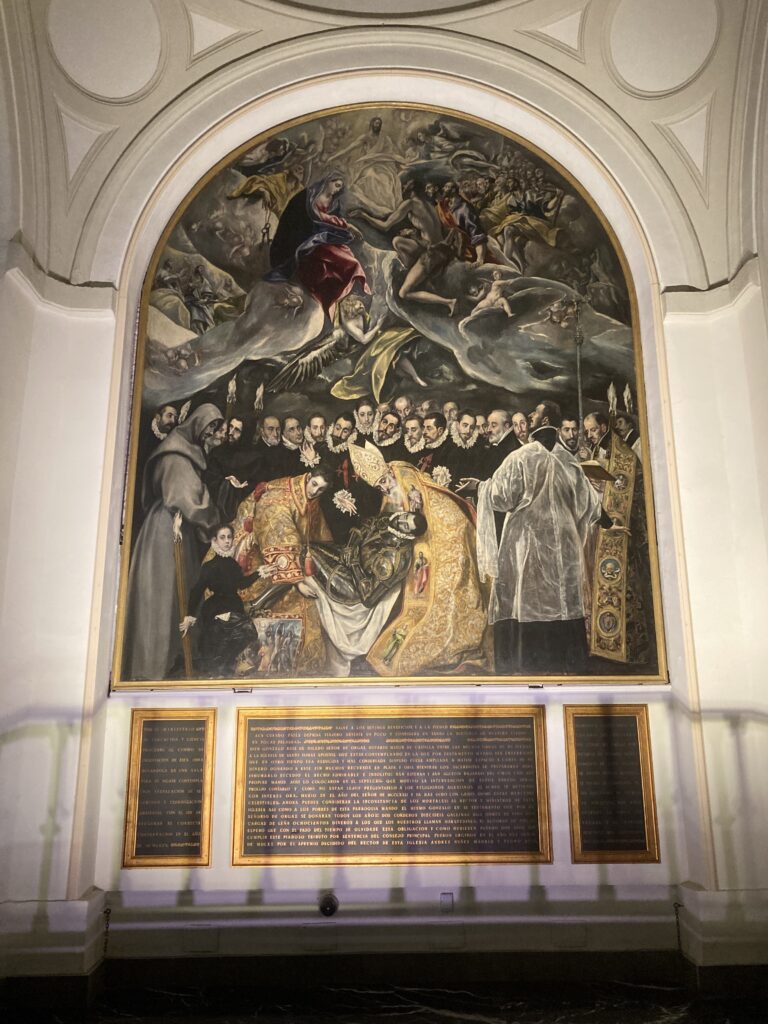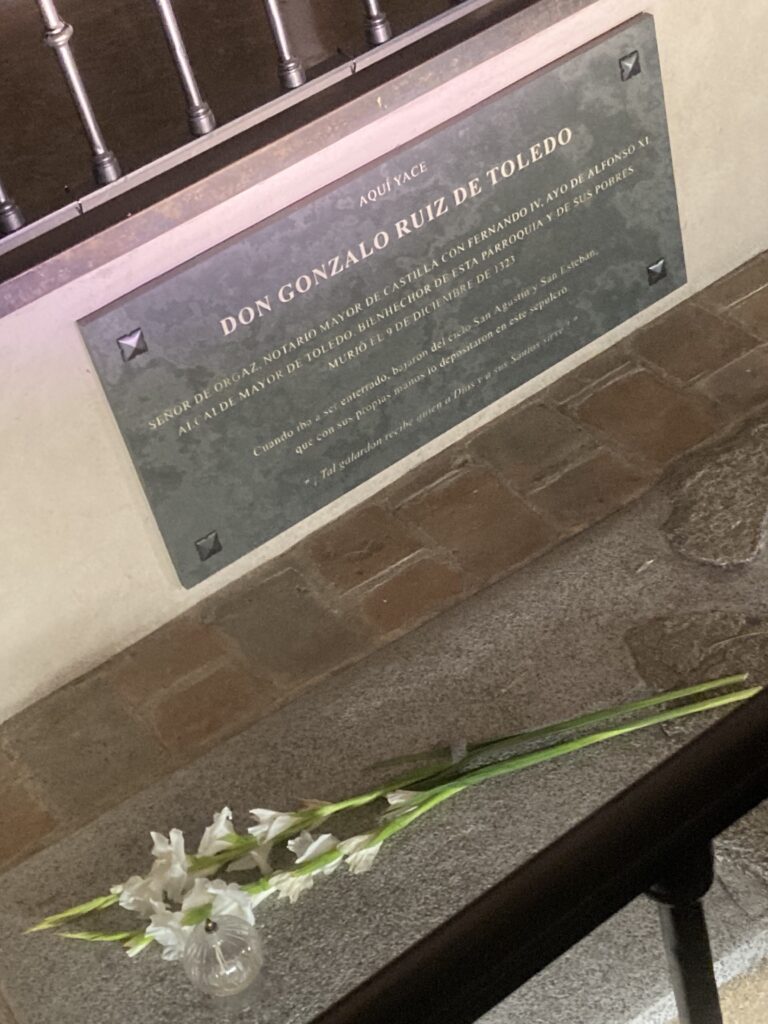Second Stop – Toledo
#Destination Scotland
The beauty of using satnav, is that you can search for parking spaces close to the venue that you intend to visit. This is how I found myself inching up the narrow, twisting cobbled streets of Toledo, to an underground space tightly packed with vehicles, with apparently just the one reserved spot left for me. Many others had left derogatory comments on the car park’s web page relating to their difficulty in squeezing in there, but anyone experienced in driving within Gibraltar’s city walls is well practiced at navigating narrow streets and tight parking spaces.
The reward was my proximity to the Santo Tomé Church, where the famous The Burial of the Count of Orgaz hangs. This artwork is a 1586 painting by El Greco, a prominent Renaissance painter, sculptor, and architect of, you’ve guessed it, Greek origin. When I studied history of art in Reykjavik, Iceland, and learned about these important works, why they were groundbreaking on a technical level, I would look at where in the world they were located, and could never ask or imagine that I would ever be transported to the exotic countries in my lifetime.
So here I am, outside the tiny car park, standing on the shiny cobbles, suddenly surrounded by Japanese tourists in brightly coloured plastic macs, headed towards my destination, only a four minute walk away. Do I care that it is raining?

It was certainly worth the wait, since 1588 people have been flocking to see it, although I have come to it 437 years later, it seems as exciting to me now as it must have been when it was first unveiled. I cannot imagine though, the extra layer of poignancy which surely would have affected the first to see the painting, when I learned about the human connection to the place I was standing.

Wikipedia informs us that the painting is inspired by a legend of the early 14th century. In 1323, a certain Don Gonzalo Ruiz de Toledo, mayor of the town of Orgaz, died (his family later received the title of Count, by which he is generally and posthumously known). Don Gonzalo Ruiz de Toledo was a descendant of the noble Palaiologos family, which produced the last ruling dynasty of the Byzantine Empire. A pious Caballero, the Count of Orgaz was also a philanthropist, who, among other charitable acts, left a sum of money for the enlargement and adornment of the church of Santo Tomé where he wanted to be buried. As it happened this was El Greco’s own parish church for he lived in Toledo at that time.
According to the legend, at the time the Count was buried, Saint Stephen and Saint Augustine, descended in person from the heavens and lowered him into the sepulchre where his body now lies, immediately below the painting, with their own hands in front of the dazzled eyes of those present.
This is the event depicted in the painting, can you imagine what it would mean to step in off the street and see this moment in time from exactly 700 years ago now, immortalised before you? Portrayed with such realism, such intimacy, with the obvious interaction between those still on this earth and the Saints above? The painting itself has a miraculous ability to reach out to any viewer stands before it, and infect them too with surprise and awe, and then walk away with the hope that we poor souls may also be laid to rest with some dignity, and God willing, find our way to stand, gratefully praising the highest power, with the figures of light in the upper section of the canvas.

Leave a Reply